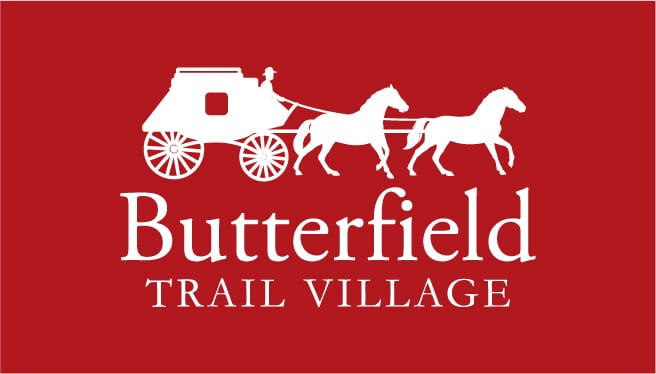A Man of Discovery
Neil Ingels vividly recalls big and small moments from throughout his life. And he’s packed quite a lot into his 86 years.
At 10, on a family trip to remote Wisconsin, he explored a crystal-clear lake by rowboat and could count the pebbles at the bottom. At 13, the family spent six weeks in a beach cabin on the Jersey shore, where he learned to body surf in the Atlantic Ocean and watched crabs by the thousands. On a Boy Scout outing, the rest of the group snuck out and went to town – leaving him alone. “And I loved it. I loved being alone in the woods. It’s where I belong,” Neil said.
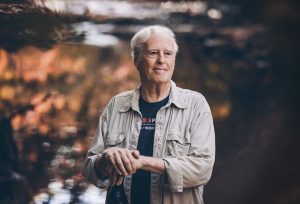
As an adult, while backpacking in the High Sierra, his group camped in a meadow. When he woke in the morning, he felt something warm at his back. He unzipped his tent to find a doe pressed against him through the tent with her sleeping newborn fawn nearby.
Neil has thousands of photos from his 50-plus years spent traveling and exploring the outdoors. In his career, he would combine his passions for photography and hiking to make discoveries in the bioengineering field.
For his accomplishments, the University of Arkansas honored him in October with a 2023 Citation of Distinguished Alumni Award. It’s among many recognitions for his work, including an honorary doctorate from Linköping University in Sweden. For Neil, however, the work is the thing. The quest, the challenge, the problem to solve is what drives him.
There’s a pattern to Neil’s life. He’s curious about something, and he starts at the library to learn more. When there’s little or no information, he does his own research. Sometimes, he writes a book. When he does something, he commits to it and delves into it with depth and focus.
Path to Family and Life’s Work
Neil was born in Evanston, Illinois. The family eventually moved to Fayetteville in 1951 when Neil was 14. They bought 20 acres at the base of Markham Hill and built a home.
This former city kid quickly took to the idea of farming. He got involved with the Future Farmers of America and developed a formula for feed to properly nourish pigs, which won him three Grand Champion ribbons. He also served as the three-county president for FFA and was on its debate team. “With debate, you learned to think through both sides of an issue. I think that’s enormously valuable,” he said.
Every day, after school at Fayetteville High, he worked as a soda jerk at Collier’s Drug Store on Dickson Street. He was a drummer in a Dixieland Combo, and years later would learn guitar and folk singing and play drums in a community marching band.
There was no question he’d attend the U of A, as had his father and others in his family, and he decided to study electrical engineering.
Neil worked summers to pay for college. Summer jobs included climbing telephone poles with spikes to do repairs for the phone company and working as a roughneck on a wildcat oilfield rig near Houston.
He’d done photography in high school – with his own darkroom and processing chemicals. At the U of A, he worked with the official campus photographer to take photos at football games and of campus groups.
Neil recalls when he and a group of students gathered on the roof of the historic Engineering Hall in 1957 to watch the Sputnik satellite in orbit. He helped found the campus Rocket Society, and members built and launched a 9-foot rocket at a local farm.
At the U of A, he also met Judy Rothe at the campus Presbyterian youth center. They bonded as they discussed both being water safety instructors, and they haven’t stopped talking (recently celebrating their 64th wedding anniversary).
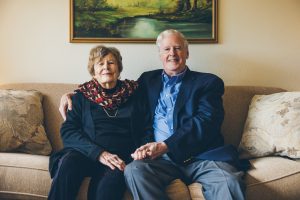
They married in 1959 and soon landed in Sunnyvale, California, where he’d gotten a job with Lockheed. He and Judy had two children, Anne, and Neil III, and she stayed home with them. They also were foster parents for five years. Their children’s interest in soccer, coupled with the lack of material at that time about coaching this emerging sport, led him to research this topic extensively, then to write two books on the subject. The wide acceptance of these books, with more than 160,000 in print, led to their formation of a small publishing business, with Judy as president, and an accepted invitation for Neil to become National Director of Coaching of the American Youth Soccer Organization.
While at Lockheed, Neil earned a master’s degree in electrical engineering at Santa Clara University, and he went on to get his Ph.D. in electrical engineering from Stanford University in 1967.
Disciplines Combine in Research
Neil worked in an advanced development group at Lockheed, designing guidance and control systems for space satellites. But the work didn’t satisfy him, and he considered going to medical school.
After talking with a researcher at the Palo Alto Medical Research Foundation, he soon took a job in the bioengineering department. It meant a 40 percent pay cut, but Neil saw an opportunity to apply engineering to medical problems.
His boss got a grant from Hewlett Packard to make a short movie explaining the new electronics available to doctors. One was the pacemaker, and Neil was to create a model of the device for the film, as it was so new, no one had one locally.
“The more I read, the more I realized that they weren’t even close to what we were doing in the space business about packaging and electronics,” he said.
He knew of a pulse circuit that would remove most of the components from the pacemaker, and he secured a National Institutes of Health research grant. One issue was the leads were sewn directly to the heart muscle, meaning they flexed with a heart’s 100,000 beats each day, and they kept breaking. He wanted to find a quieter spot on the heart – and learned its motion hadn’t been measured.
This is where his photography and backpacking experiences came in. With help from the nearby Geological Survey, the U.S. agency responsible for making topographic maps, Neil spent five years using his electrical engineering background to design everything – his own computer, a timing system, high voltage system, xenon probe units, etc.
“I thought maybe I could make a topographic map of the surface of the heart and watch the mountains and valleys change and see what the motion’s like,” he said.
By dotting the heart’s surface with markers, two wide-angle high-resolution cameras could visualize the dots in stereo when they were lit up in a dark room. With enough dots covering the heart, he could create sequential topographic maps of the heart surface at rapid intervals to measure the heart’s motion. He published this work, and then began to wonder if this might work in coronary angiograms.
Getting a Read on the Heart
Neil was invited to do marker studies by the Stanford medical school team that had done the first human heart transplant in the United States in 1968. By placing miniature tantalum markers into the donor heart before transplanting, they could monitor the effectiveness of anti-rejection drugs. Doctors implanted the markers into two patients in 1974, and Neil and the team of cardiac surgeons, cardiologists and radiologists applied this stereo X-ray marker method in clinical research with more than 300 patients. This all led Neil to be invited to lectures and more than 400 publications and presentations, for which he and Judy traveled the world.
In early studies, Neil wanted to know if he could get away with using one X-ray camera instead of two to see the markers. Studying the data from transplant patients, they discovered that the heart twists as it beats – in opposite directions at the top and bottom, while staying still in the middle, like wringing out a washcloth.
“When we published that, we didn’t publish it as a breakthrough because I didn’t even know,” Neil said. “It was just part of the first paper describing the marker technique in patients.” But it resolved a 300-year-old debate about how the heart contracted.
Neil next targeted his focus on the mitral valve. Using the marker method, his team determined that the leaflets of the mitral valve are not passive but rather are a complete organ system with blood supply and neural control.
Neil retired in 2012 but kept his office at the Research Institute. Over three years, he and a former post-doc researcher wrote a book, Mitral Valve Mechanics. The 42-chapter e-book has been downloaded more than 2,500 times. He thinks about the mitral valve all the time and is still making discoveries that will be part of the second edition of the book.
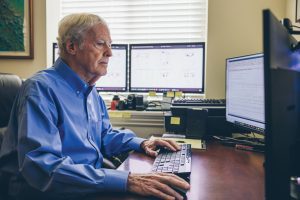
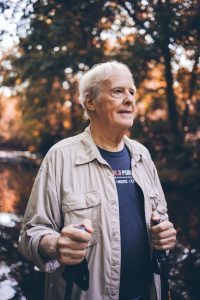
Full Circle, Returning Home
After 56 years in California, Neil and Judy decided to return to Arkansas, where they’d often visited family over the years. They moved into their BTV apartment in December 2016. Neil’s late sister and brother-in-law, Sally and Jerol Garrison, lived in a Village Home then. His parents had been founding committee members and early residents starting in the mid-1980s, and Judy’s mother also lived here.
Neil and Judy love living at BTV. “We get social interaction, we get good nourishment, and we get great health care and all the amenities,” he said.
Food insecurity, global warming and preserving democracy are issues that greatly concern him. Twice a month Neil transports and serves food for Community Meals prepared at their church, First United Presbyterian.
When at Stanford, Neil taught in the electrical engineering department and also mentored dozens of post-docs in heart research at its medical school. He continues his pattern of learning and teaching, currently serving as an adjunct professor of biomedical engineering at the U of A.
Words by Michelle Parks | Photos by Stephen Ironside
